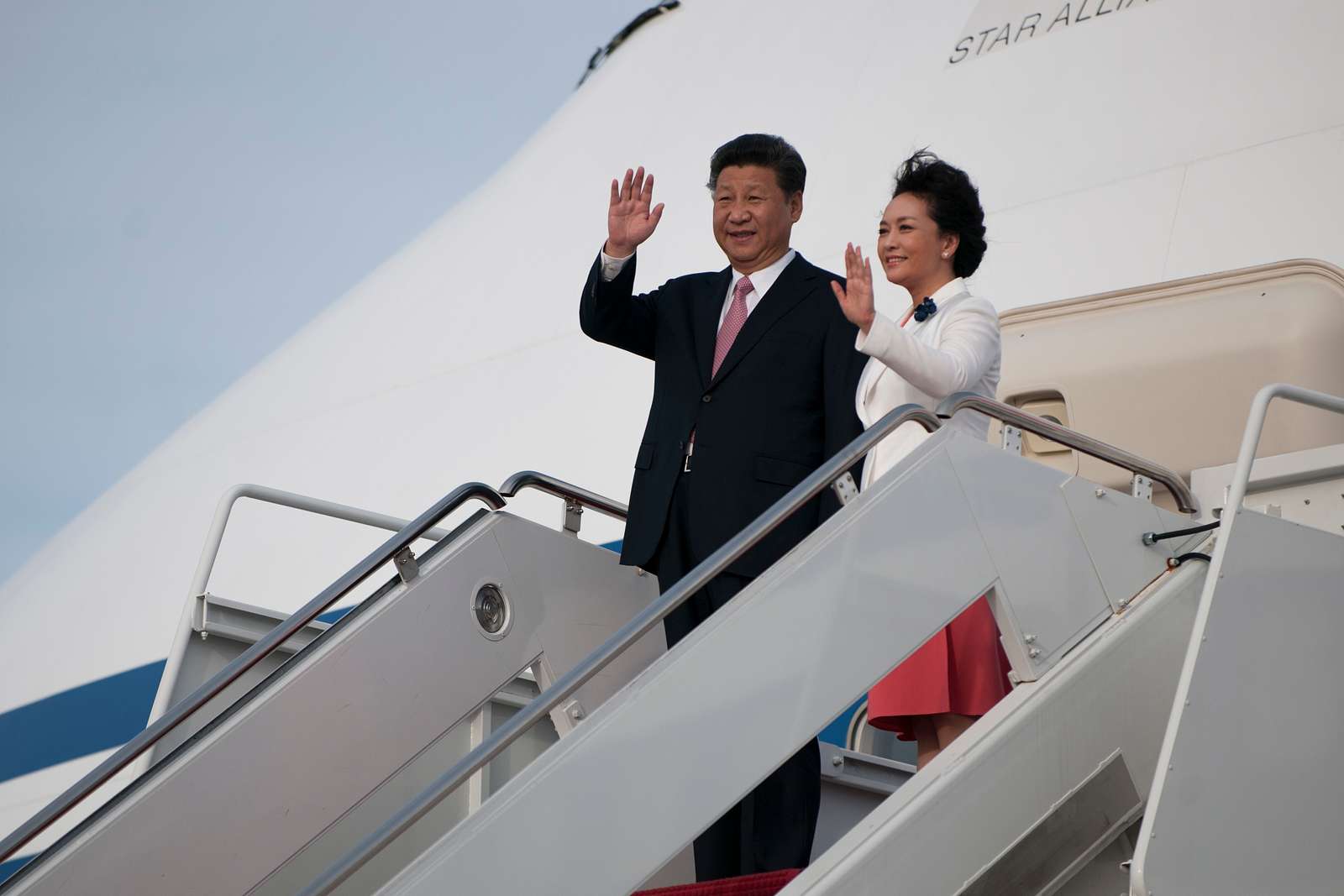Learning From China's Techlash
On the more technical areas of tech reform, like data portability, U.S. policymakers should learn from China’s experience.

Published by The Lawfare Institute
in Cooperation With

In a congressional hearing in September, a senator asked a question that would have once seemed implausible: “So what do you think of the Chinese edict” that limits the time children can spend on video games, he asked. “And should the United States government think about doing something like that?”
A decade ago, tech policy in the United States and China were on different paths. In a speech on internet freedom in 2010, Secretary of State Hillary Clinton championed regulations that prioritized innovation and expression, in contrast to China’s model of control and censorship. “Countries that restrict free access to information or violate the basic rights of internet users risk walling themselves off from the progress of the next century,” she said, emphasizing that “the United States and China have different views on this issue.”
But with President Xi and President Biden holding a virtual summit last night, it’s striking how much the U.S. vision for tech reform now looks like China’s. President Xi Jinping’s government has essentially implemented House Democrats’ tech reform agenda—faster and more comprehensively than Congress or the White House. The two countries have markedly different postures on issues like human rights, but the gaps between the two countries’ political systems may have less of an effect on some of the more technical areas of tech reform, like data portability. U.S. policymakers should learn from China’s experience.
Lawmakers in both parties argue that a handful of stagnant monopolies threaten the nation’s democracy. The result has been a surge of legislative activity that seeks to constrain the power of U.S. tech companies and clamp down on the openness that American politicians once boasted of. Members of Congress have introduced dozens of proposals to limit online expression, and House Democrats proposed a sweeping antitrust reform agenda that could prevent Amazon from selling its AmazonBasics products on the site, and Google from including its own maps as top results when users search for “nearby restaurants.” Under the same proposals, Apple might be required to share user data with Chinese tech company Tencent even though Tencent wouldn’t need to share equivalent data with Apple.
So far, nothing has become law, and House leaders haven’t even decided whether to bring the reform package to the floor for a vote. Politicians in the United States have debated these proposals for years, with the volume escalating in the run-up to the 2020 elections and intensifying in the wake of the disclosures made by Facebook whistleblower Frances Haugen.
But as the U.S. has debated tech reform, China has enacted it. U.S. politicians talk about problematic acquisitions by large tech platforms, but Chinese authorities have blocked proposed mergers. U.S. policymakers assert that Big Tech platforms use their market position for harm but have faced headwinds in court. Meanwhile, in China, authorities imposed a record fine on Alibaba for abusing its dominant position. Politicians in the U.S. have argued that tech companies shouldn’t be able to exclude competitors from accessing their services, while in China, authorities ordered Alibaba, Tencent, ByteDance and Baidu to stop blocking rivals’ links on their platforms. Members of Congress have talked about data portability and interoperability, but China has called on Alibaba and Tencent to share data and to develop product integrations that allow users on one service to interact easily with users on others. And while U.S. policymakers talk about restraining the wealth and market power of large tech firms, China’s punches have already landed: The country’s top six tech companies have already lost $1.1 trillion in market value.
Commentators have speculated about whether reform in China is driven by the same motivations as reform in the United States. Some claim it’s rooted in similar concerns about corporate power and harmful corporate conduct; others say it’s more motivated by industrial policy favoring certain technologies over others, or by a desire to ensure that companies act in accordance with government priorities. Other analyses have emphasized President Xi’s effort to distance Chinese capitalism from Western capitalism, using the concept of “common prosperity” to justify harnessing private businesses to serve state objectives. To some observers, the convergence of the policy agendas in the United States and China might suggest that these reforms are the right ones, while others argue that following China’s path would harm U.S. national security and economic interests.
But no matter the impetus, the U.S. reform agenda looks similar to China’s. So does the convergence of U.S. and Chinese tech policy mean this reform plan is the right one, or should the U.S. be wary of following China’s path?
The thinking around tech regulation in the United States has long been to “learn as we go.” But even when policymakers’ intuitions about the impact of reform are rooted in expertise and thoughtful analysis, they merely guess at what the future will bring. Look at the backfiring of reforms notionally designed to protect sex workers, or at how venture capital investment has declined in the wake of Europe’s new privacy rules, making it harder for startups to compete with the tech giants that otherwise attract the ire of EU tech regulators.
But China’s experience undertaking certain tech reforms offers an instructive example for U.S. policymakers.
Before enacting widespread reform, U.S. policymakers should conduct cost-benefit analyses of any tech reform proposal with a Chinese equivalent. Do data-sharing requirements promote competition or harm privacy? Will tighter merger restrictions create opportunities for new and emerging firms, or will it decrease acquisition prices, thereby crippling venture capital financing and the startup ecosystem? Will more aggressive antitrust enforcement enhance innovation or squelch it? These are the sorts of questions that U.S. policymakers should be asking to shed light on the mystery of tech reform, and China’s experience with reform can serve as a useful data point for starting to answer them.
Cost-benefit analysis that is informed by China’s experience not only will help in providing an estimate of whether projected benefits are likely to exceed projected costs but also will aid in clarifying the objectives of reform that will serve as benchmarks for evaluating success. Today, legislators and pundits often talk in general terms about the pros and cons of various proposals, but a member of Congress who gives an interview about legislation she has introduced is not likely to articulate its potential costs in detail.
Debates on tech reform proposals would benefit from more rigorous, data-driven cost-benefit analysis. This approach is regularly used in the executive branch to evaluate proposed administrative rules, and legislators and antitrust enforcement agencies should do similar assessments in advance of any significant tech reform. They should then publish these analyses, so that public debates about legislative proposals can include a realistic discussion of trade-offs.
More detailed cost-benefit analysis might also make it easier to overcome some of the barriers that stand in the way of sensible reform. When the analysis shows that likely benefits dramatically outweigh likely harms, industry lobbyists may find it more difficult to argue that reform would harm users. And when costs clearly outweigh benefits, legislators may struggle to advance policies that make for good politics but bad tech products. Detailed assessments of costs and benefits will help to ground policy debates in the reality of impact, rather than allowing them to be driven principally by power and politics.
Another important element of learning is to evaluate the impact of reforms after they take effect. Legislation should be explicit in establishing processes to evaluate impact. One option to accomplish this would be to appoint audit committees of academics, engineers and policy experts to review progress at regular intervals. Using the same cost-benefit process conducted during legislative debate, the committees could review the law’s impact after passage. As part of this process, policymakers should take into account the impacts of similar reforms in other countries, like China.
Evaluating impact will be significantly easier if platforms are able to share data with researchers to review progress. Academics have long advocated for this type of involvement in tech oversight, but Congress hasn’t yet created a workable regulatory model for data sharing and engagement, where both platforms and researchers have the protection they need to share data for research. Recent proposals offer a glimmer of hope that the future will bring better data-sharing models, but in the absence of congressional action, researchers will continue to struggle to obtain the data necessary to assess basic aspects of the internet’s impact on society.
Taking learning seriously might also mean that legislators should be required to review and debate policies even after they have been passed. Tech reform could include automatic sunset provisions to require legislators to regularly revisit the law and determine whether it should be renewed. Automatic review triggers could help to avoid the problem that now plagues the controversial FOSTA-SESTA reform of Section 230 that was passed in 2018. FOSTA-SESTA was designed to protect the sex industry, but only a few years after its passage, advocates are already campaigning for its repeal. Even so, it will be difficult to muster the political support necessary to walk the law back. A sunset provision that forces review would require the impact of these types of reforms to be examined at regular intervals.
This practice is already common in legislation in other dynamic areas, such as national security. Because the impacts are uncertain and because tech products and markets evolve so rapidly, tech reform should be designed similarly. Alternatively, sunsets could be tied to audit committee review; a law could continue indefinitely unless an audit committee formally recommends against renewal, thereby triggering a sunset.
Of course, there’s understandable skepticism about learning from China. The United States and China have different political systems, different conceptions of civil liberties, and different histories with tech regulation, so implementing identical policies could well produce different results. China is ranked last in the world for internet freedom, while the United States is ranked toward the top. The two countries are not the same.
At the same time, data portability and merger restrictions aren’t censorship and surveillance. The historic differences between the two countries on political issues and human rights may matter less when the issues are more technical in nature. If data portability fuels competition in China’s tech sector, U.S. policymakers should consider whether it could have a similar impact here. If it exposes users to privacy risks and security breaches, then U.S. regulators should adapt current proposals to take that risk into account.
Despite the differences between the two countries, U.S. policymakers shouldn’t miss this opportunity to learn. China’s rapid implementation of reforms that are similar to proposals in the United States means that no matter what intuition may say about the right way to reform the tech sector, there’s no longer an excuse to proceed blindly.





